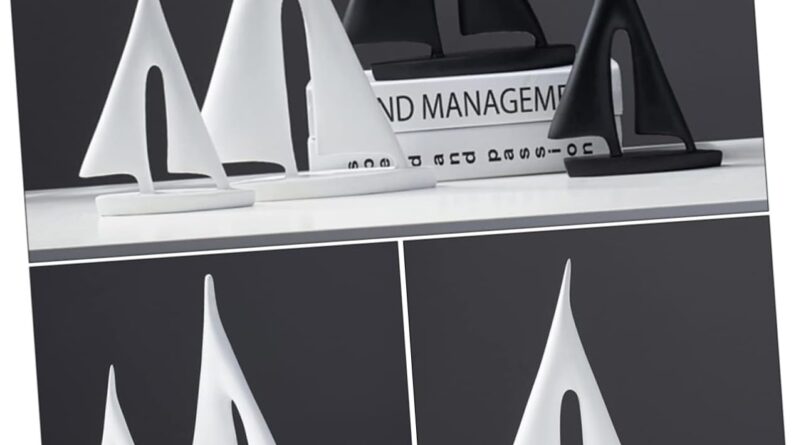







Table of Contents
Why Ship Models Are a Fascinating Hobby
Ship models have been captivating enthusiasts for centuries. From intricate handmade replicas to detailed scale models, these miniature vessels offer a window into the fascinating world of maritime history. Whether you’re a history buff, an avid collector, or simply looking for a new hobby, ship modeling can provide hours of enjoyment and a sense of accomplishment. In this article, we will explore the allure of ship models and why they continue to captivate enthusiasts around the world.
The Art of Ship Modeling
Creating a ship model is more than a mere pastime; it’s an art form. Building miniature ships requires precision and attention to detail. From researching historical references to carefully shaping and assembling each component, ship modelers invest their time and skill to achieve the utmost authenticity. The end result is a beautiful rendition of a sailing vessel, often evoking a sense of wonder and admiration.
The craft of ship modeling dates back centuries, with early examples found in ancient Egypt, Greece, and Rome. These models were not only decorative but also served practical purposes, such as aiding in shipbuilding and navigation. Today, ship models serve as both collectibles and educational tools, allowing enthusiasts to delve into the rich history of seafaring.
The Appeal of Ship Models
There are several reasons why ship models hold such a strong appeal:
1. Historical Significance: Ship models provide a tangible link to maritime history. They allow us to understand the design, construction, and sailing techniques of different eras. By examining a model, we can gain insights into the challenges faced by sailors throughout history.
2. Aesthetic Beauty: Ship models are exquisite works of craftsmanship. The level of detail and intricacy showcased in these models is truly awe-inspiring. From the meticulously carved wooden hulls to the intricately rigged sails, ship models are a testament to the skill and artistry of their creators.
3. Educational Value: Ship models offer a hands-on learning experience. They provide an opportunity to explore naval architecture, seamanship, and the principles of sailing. Many ship model kits come with historical information and step-by-step instructions, making them a valuable tool for both beginners and experienced modelers.
4. Sense of Achievement: Building a ship model requires patience, perseverance, and problem-solving skills. As each component comes together, modelers experience a sense of achievement and pride in their craftsmanship. Completing a ship model is a rewarding experience that showcases one’s dedication and attention to detail.
Choosing the Right Ship Model
When selecting a ship model, there are a few factors to consider:
1. Historical Era: Decide whether you’re interested in a specific era or type of ship. From ancient galleys to modern battleships, there is a wide range of models available to suit various preferences.
2. Skill Level: Consider your level of expertise in ship modeling. Beginners may want to start with simpler models, while experienced modelers can take on more complex builds. Many manufacturers provide kits with different skill levels to accommodate all levels of proficiency.
3. Materials: Ship models are made from various materials, including wood, plastic, and metal. Each material has its own unique characteristics, so choose one that aligns with your preferences and desired level of realism.
4. Scale: Determine the scale of the model you want to build. Common scales include 1:72, 1:100, and 1:200. The scale will affect the level of detail and the overall size of the finished model.
Frequently Asked Questions
1. In what ways can ship modeling be educational?
Ship modeling offers an opportunity to learn about naval architecture, historical sailing techniques, and the challenges faced by sailors throughout history. It can also enhance problem-solving skills, patience, and attention to detail.
2. Can ship models be displayed in museums?
Yes, ship models are often displayed in museums around the world. These exhibits showcase the artistry and historical significance of ship modeling. Museums provide a platform for enthusiasts and the general public to appreciate the craftsmanship and learn from the exhibits.
3. Are there online communities for ship modelers?
Absolutely! Online communities and forums dedicated to ship modeling are thriving. These platforms allow modelers to share their work, seek advice, and connect with fellow enthusiasts from all over the world. It’s a great way to gain inspiration and expand your knowledge.
4. Is ship modeling an expensive hobby?
The cost of ship modeling can vary depending on the complexity of the model and the materials used. Beginners can start with affordable kits, while advanced builders may invest in high-quality materials and tools. However, it’s a hobby that can be enjoyed at any budget, and the sense of achievement is priceless.
5. Can ship modeling be a family activity?
Certainly! Ship modeling can be a wonderful family activity, allowing for quality time together and the opportunity to learn and create as a team. Building a ship model can be a bonding experience and a chance to pass down historical knowledge and skills to younger generations.
In conclusion, ship modeling is a captivating hobby that transcends time. The intricate craftsmanship, historical significance, and educational value make it an appealing pursuit for enthusiasts of all ages. Whether you’re building a model for display or diving deep into maritime history, the world of ship models offers a vast ocean of possibilities. So set sail on your ship modeling journey and unlock the wonders of the sea’s rich heritage.
Price: $105.98 - $45.99
(as of Jul 03, 2023 04:58:04 UTC – Details)







